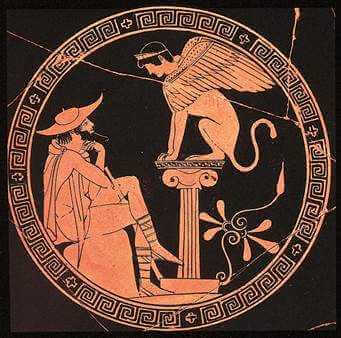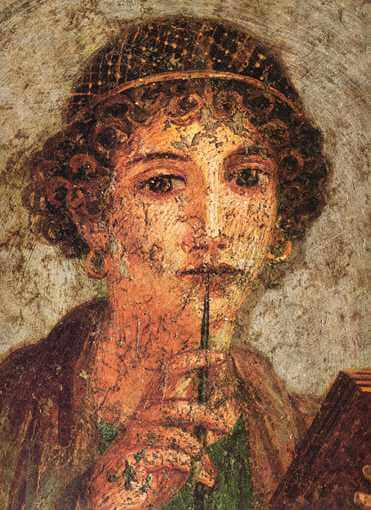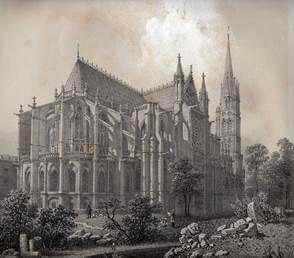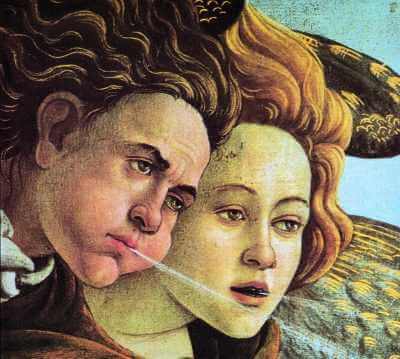Lesson Plans
that INTEGRATE ART
ACROSS THE CURRICULUM
Seeing Ourselves in Art and Art History
Art shows us the past, not only the way previous generations looked and dressed, but how they lived: their class systems, religious practices, politics, gender roles and war craft.
NEXUS treats art as a Common Core subject (similar to DBAE) and includes it as a key interdisciplinary component of history and literature education. In NEXUS books, art also provides a lens through which we can gain a clearer understanding of the contemporary world.
Incorporating art in history and literature is an ideal way to engage visual learners.
With NEXUS students learn to read metaphorical art as fluently as they interpret literature. Many paintings and sculptures include narrative elements and visual figurative language: visual metaphor, contrast, symbols, and irony. Learning to read art helps students improve their language arts skills by reinforcing and expanding their understanding of figurative language. At the same time it enhances visual literacy, enabling students to interpret and analyze the images with which they are constantly surrounded in the 21st century. Until now there has been very little stress on visual literacy in American education. NEXUS reverses this paradigm.
Ancient Greece Art Lessons, Projects and Cross-Curricular Connections

![]() Greek Art, Visual Storytelling
Greek Art, Visual Storytelling
Some Greek vases narrate myths of gods and heroes; others depict episodes from stories like the Odyssey; and some depict scenes of daily life. “By exploring Greek art we can learn to see through ancient eyes and almost step across the ages to attend 5th-century B.C. Olympic Games and festivals, sit in on an Athenian play, or tour an ancient pottery factory. Scenes like these are depicted on Greek vases and sculptural works. In his poem Ode on a Grecian Urn, the 19th-century poet John Keats invites us to walk with him into the life depicted on a Greek vase, resurrecting the past as if it were a sleeping world waiting for someone to appreciate it to awaken.” [ For more see “Greek Art, Visual Storytelling,” Antigone and the Greek World, NEXUS]
![]() Sculpture and Symmetry
Sculpture and Symmetry
"The Greeks loved balance and symmetry. We see it in their pottery, their painting, and their sculpture….About six copies of Polykleitos’ statues exist. Let’s look at a copy of his Doryphorous….Notice how the tension between contracted and relaxed muscles brings the statue to life even more than the Kritian statue. The right arm is straight like the right leg, yet it’s relaxed while the leg is tense. His left arm, which held the spear, is bent like the left leg, but the arm is poised for action and the leg is relaxed. This balance of similarity and difference, and of opposite but equal forces, helps give the figure its harmony. The balance is so subtle that it is more felt than seen." [For more see “Sculpture and Symmetry,” Antigone and the Greek World, NEXUS]
Roman Art Lessons

![]() Roman Paintings, Sculptures and Relief - Reality or Mirage
Roman Paintings, Sculptures and Relief - Reality or Mirage
"Roman artists were masters of deception, magicians who could conjure up images so realistic that viewers thought they were looking at the real thing. Roman writers tell about paintings of buildings with tiled roofs that looked so real that crows tried to land on them…" [For more see “Roman Art, Reality or Mirage,” Julius Caesar and Ancient Rome, from Republic to Empire, NEXUS]
"Before the 2nd century AD, the Romans usually cremated their dead and placed the ashes in elaborate marble urns or boxes. Let’s look at a typical example, a Cinerary Urn shaped like a house or temple with a slanting roof as its lid (see figure on previous page). It’s about the size of a boom box and is covered with carved decoration. It probably once had a painted inscription naming the deceased in the blank rectangular plaque in the center. Can you find what might be an image of the dead man, flanked by portraits of his wife and son? These portraits are realistic (not symbolic); all the other carved decorations are symbolic as well as realistic. For instance, the garland of fruit and the two birds below the portraits symbolize…" [For more see “Roman Art, Reality or Mirage,” Julius Caesar and Ancient Rome, from Republic to Empire, NEXUS]
Medieval Art and Period Art Lessons

![]() Gothic Architecture
Gothic Architecture

![]() Illuminated Manuscript
Illuminated Manuscript

![]() Bayeux Tapestry – Visual Narrative of the Battle of Hastings
Bayeux Tapestry – Visual Narrative of the Battle of Hastings
Reading the Bayeux Tapestry as a reenactment of the famous battle that changed England forever with follow-up art lessons and art history lessons
Renaissance Art and Art Integration Lesson Plans

![]() Botticelli – the Poet Painter
Botticelli – the Poet Painter
During the Renaissance, Christianity and a diluted form of paganism existed side by side, usually in harmony….The painter Sandro Botticelli sometimes used the same model for his Madonnas and his Venuses. Renaissance philosophers like Marsilio Ficino and Pico della Mirandola attempted to reconcile Platonic and Neoplatonic philosophy with Christian doctrine. Plato, the pagan, ancient Greek philosopher, was so popular that one of the Medici founded a Platonic Academy in Florence – kind of a Dead Poets Society for grownups. At meetings, members gathered around a lighted bust of Plato and debated philosophy, religion, and art and read poetry in Latin and Greek. One of the members of this rarified group was Botticelli. [For more see “The Rebirth of Venus, Mythology in Art and Literature,” Romeo and Juliet and the Renaissance, NEXUS]

![]() Art Lessons à la Leonardo – Visual Metaphor and One-Point Perspective
Art Lessons à la Leonardo – Visual Metaphor and One-Point Perspective
Interpreting Leonardo da Vinci’s masterpiece.
In 1493, "one year after Columbus sailed to the New World, Leonardo da Vinci began work on The Last Supper in the dining hall of a Milanese monastery. It was painted on a wall overlooking the eating tables so the monks of Santa Maria delle Grazie could contemplate it while they ate. But until Leonardo finished the gigantic painting, the monks had to eat in the kitchen or outside. ‘It is said that the prior of that place kept pressing Leonardo…to finish the work,’ wrote Giorgio Vasari in his Lives of the Artists, ‘for it seemed strange to him to see Leonardo sometimes stand half a day at a time, lost in meditation….He would have liked him to go on like the laborers hoeing in his garden, without ever stopping his brush.’ Several years later – the painting still unfinished – the Prior filed a complaint…" [For more see “The Explorers of Picture Space, Age of Rediscovery,” Romeo and Juliet and the Renaissance,NEXUS]
American Art – Reading Narrative Art and Visual Metaphor

![]() Harlem Renaissance- Interpreting Murals that Document Black History
Harlem Renaissance- Interpreting Murals that Document Black History
Song of the Towers and Building More Stately Mansions, murals by Aaron Douglas, are poetic windows into African-American history that students explore in this volume of NEXUS. We help them identify visual metaphors, symbols, contrast, and irony in the murals.
In Song of the Towers a jazzman playing a saxophone stands on a giant gear or cog. At the center of the painting is a miniaturized Statue of Liberty with circles of light emanating from it. New York City buildings thrust into the sky, creating a geometric, stylized pattern. A series of circles and waves cuts across these buildings. Smoke stacks puff gray plumes into the air, and an apartment building with inviting windows nestles in the hub of the giant gear…” [For more see The Harlem Renaissance, NEXUS.]
"On the lower right, a man races up the gear, carrying a suitcase. He’s running from something. Green flames lick at his heels, and a gnarly green hand grabs at him from behind. Notice the man’s clothes are ragged, his pants torn at the bottom like a farm hand’s work trousers. Also, he’s barefoot. In contrast, the man playing the saxophone is well-dressed; he is bold and dignified as his music appears to be…" [ For more see “Renaissance Visions, the Art of Aaron Douglas,” The Harlem Renaissance, NEXUS]

![]() Lessons for Analyzing Art of the Great Depression and the Dust Bowl
Lessons for Analyzing Art of the Great Depression and the Dust Bowl
Oklahoma Dust Storm - photograph by Arthur Rothstein - shows a half buried house in the Dust Bowl.
White Angel Bread Line by Dorothea Lange depicts unemployed men waiting in a San Francisco bread line during the Great Depression.
Online Interdisciplinary Art Gallery (Coming Soon) – Student Art Work and Interdisciplinary Art Project Ideas

